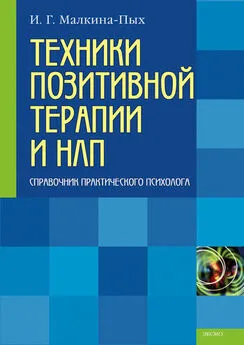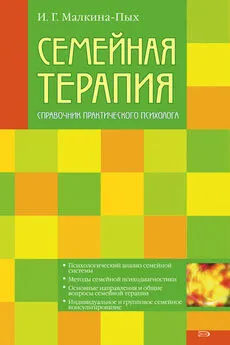Ирина Малкина-Пых - Психология поведения жертвы
- Название:Психология поведения жертвы
- Автор:
- Жанр:
- Издательство:неизвестно
- Год:неизвестен
- ISBN:нет данных
- Рейтинг:
- Избранное:Добавить в избранное
-
Отзывы:
-
Ваша оценка:
Ирина Малкина-Пых - Психология поведения жертвы краткое содержание
В справочнике рассмотрены предмет, история и перспективы виктимологии, проанализированы соотношения понятий типов жертв и видов виктимности, а также существующие виды и формы насилия. Особое внимание уделено анализу психологических теорий, которые с различных позиций объясняют формирование повышенной виктимности личности, или «феномена жертвы».
В книге также рассматриваются различные ситуации, попадая в которые человек становится жертвой, а именно криминальные преступления и захват заложников; такие специфические виды насилия, как насилие над детьми, семейное насилие, сексуальное насилие (изнасилование), школьное насилие и моббинг (насилие на рабочем месте). Рассмотрена виктимология аддиктивного (зависимого) поведения. Описаны как подходы к индивидуальному консультированию в каждом из указанных случаев, так и групповые формы работы в виде тренингов.
Данный справочник представляет собой удобный источник, к которому смогут обратиться практики, исследователи и студенты, для того, чтобы получить всеобъемлющую информацию по техникам и инструментам коррекционной работы как с потенциальными, так и реализованными жертвами различных экстремальных ситуаций.
Психология поведения жертвы - читать онлайн бесплатно полную версию (весь текст целиком)
Интервал:
Закладка:
– Благодарю вас, теперь я все поняла, – радостно ответила глупая рыба. С этими словами она с силой выбросилась из воды, упав рядом с рыбаком.
Рыбак, уже упустивший двух рыб, сунул эту рыбу в сумку, даже не потрудившись проверить, дышит она или нет. Сумку на этот раз он плотно застегнул. Снова и снова закидывал рыбак свою сеть, но первые две рыбы не покидали своего укрытия.
Наконец он решил, что надо заканчивать, и стал собираться в обратный путь. Открыв сумку и убедившись в том, что глупая рыба не дышит, он отнес ее домой и отдал коту.
О чем эта история предупреждает и чему учит:
● Как бы умен и подготовлен ты ни был, в жизни обязательно возникнут трудные ситуации.
● Чужой опыт не всегда нам полезен, а часто даже вреден.
● Если жить чужим умом и советом, можно угодить в «лапы к коту».
● Иногда лучше расплатиться малой проблемой, не допуская большой трагедии.
● Если удача сама «попала в сумку», нужно застегнуть ее покрепче.
Список использованной и рекомендуемой литературы
Abel G. G., Barlow D. H. et al. The components of rapists’ sexual arousal //Arch. Gen. Psychiatry. 1977. V. 34. P. 895–903.
Abraham K. Versuch einer Entwicklungsgeschichte der Libido auf Grund der Psychoanalyse seelisher. Storungen, 1924.
Adler A. Social interest. New York: Capricorn Books, 1964.
Adler A. The individual psychology of Alfred Adler. A systematic presentation in selection of his writings edited and annotated by H. L. Ansbacher, R. R. Ansbacher. New York: Basic Books, 1956.
Adler A. The practice and theory of Individual Psychology. London, 1924.
Adler A . What life should mean to you / Ed. by A. Porter. London: George Allen amp; Unwin Ltd., 1932.
Agger I., Jensen S.B. Testimony as ritual and evidence in psychotherapy for political refugees // Jornal of Traumatic Stress. 1990. V. 3.
Agras W.S. Eating disorders, Management of obesity, bulimia and anorexia nervosa. N.Y.: Pergamon, 1987.
Akhtar S. Identity diffusion syndrome // American Journal of Psychiatry. 1984. V. 141D. P. 34–45.
Alcoholics Anonymous World Service. Alcoholic Anonymous. Manufactured by Alcoholics Anonymous World Service. Washington DC, 2000.
Allen A.,Bloom S.L. Group and family treatment of post– traumatic stress disorder // The Psychiatric Clinics of North America / Ed. D.A. Tomb. 1994. V. 8. P. 425–438.
Altosaar K. Lapse vддrkohtlemise riskitegurid. Teoses: Laste vддrkohtlemine. Tartu, 1997.
Altosaar K. Puudega laste vддrkohtlemine perekonnas. Publitseerimata bakalaureusetцц. Tartu Ьlikool, 2000.
APA, 1986. DSM – III – R, Diagnostic and Statistical Manual of Mental Disorders (Third Edition – Revised). Washington D.C.: The American Psychiatric Association, 1986.
APA, 1994. DSM IV, Diagnostic and Statistical Manual of Mental Disorders. Washington D.C.: The American psychiatric Association, 1994.
APA, 2000. DSM – IV – TR, Diagnostic and Statistical Manual of Mental Disorders., Washington D.C.: The American Psychiatric Association, 2000.
Aristotle. Poetics. New York: The Modern Library, 1954.
Asch S.E. Effects of group pressure upon the modification and distortion of judgments // Guetzkow Н. (ed.) . Groups, leadership, and men. Pittsburgh, PA, Carnegie Press, 1951.
Asch S. Cult-induced psychopathology. Part 1: Clinical picture // Cultic Studies Journal, 1985. V. 2. P. 31–91.
Ash S. Avoiding the extremes defining the extremist cult // Cultic Studies Journal, 1984. V. 1 (1). P. 37–62.
Averill J. R. A selective review of cognitive and behavioral factors involved in the regulation of stress // The psychobiology of depressive disorders… N. Y.: Appleton – Century – Croft, 1971.
Averill J. R. Personal control over aversive stimuli and its relationship to stress // Psychological Bulletin. 1973. V. 80. P. 286–303.
Axtell A., Neulon B. An analysis of Adlerian life themes of bulimic women // Individ. Psychol. 1993. V. 49(1). P. 58–67.
Baenninger R. (ed.). Targets of violence and aggression. Amsterdam, Neth.; New York, N.Y., U.S.A.: North-Holland Pub.; Elsevier Science Pub. (Advances in Psychology; 76), 1991.
Barker E. The making of a Moonie, Choice or brainwashing. Oxford, England: Basil Blackwell, 1984.
Barker P. Using metaphors in psychotherapy. New York, Brunner/Maze, 1985.
Basler H.D.,Otte H., Schneller T., Schwoon D. Verhaltenstherapie bei psychosomatischen Erkrankungen. Stuttgart: Kohlhammer, 1979.
Beasley R., Stoltenberg C.D. Personality characteristics of male spouse abusers // Professional Psychology, Research and Practice. 1992. V. 23(4). P. 310–317.
Beck A. Cognitive therapy and the emotional disorders. New York: American Library Trade, 1993.
Beck A. Depression, causes and treatment. Philadelphia, PA: University of Pennsylvania, 1975.
Beck A., Rush A.,Shaw В., Emery G. Cognitive therapy of depression. New York, Guilford, 1979.
Beck A., Wright F., Newman C., Liese B. Cognitive therapy of substance abuse. New York: Guilford, 1995.
Beck A.T., Emery G., Greenberg R. Anxiety disorders and phobias. A cognitive perspective. New York: Basic Books, 1985.
Beck J. Changing core beliefs: Use of the core belief worksheet / H. Rosenthal (Ed.) // Favorite counseling and therapy techniques. Washington D.C.: Accelerated Development, 1998.
Beck J. Cognitive therapy: Basics and beyond. New York: Guilford, 1995.
Beebe D.W. Bulimia nervosa and depression: A theoretical and clinical appraisal in light of the binge-purge cycle // Brit. J. Clin. Pcychol. 1994. V. 33(3). P. 259–276.
Bell D.S. The motivation of addiction // Acta Neurochir (Wien), 1995. V. 132(4). P. 185–191.
Bendfeldt-Zachrisson. F. The causality of bulimia nervosa // Int. J. Ment. Health. 1992. V. 21(1). P. 57–82.
Beneke T. Men on rape. What they have to say about sexual violence. New York. St-Martin, 1983.
Bennet F.W. The price of addiction // Iowa – Med., 1990. V. 80. P. 386–387.
Bergler E. The psychology of gambling. London: Hanison, 1958.
Blatt S.J., McDonald, C., Sugarman. A. Psycodynamic theories of opiate addiction: new direction for research // Clinical Psychology Review. 1984. V. 4. P. 159–189.
Bloom L., Coburn K., Pearman J. The new assertive woman. New York: Dell Publishing, 1980.
Blundell J.E. Appetite disturbance and the problems of overweight // Drugs. 1990. V. 39(3). P. 1 – 19.
Bowlby J. The making and breaking of affectional bonds. London: Sage Press, 1979.
Brener V. Psychology of computer use, parameters of internet use, abuse and addiction, the first 90 days of the internet usage survey // Psychological reports. 1997. V. 80. P. 879–882.
Brenner J.B., Cunningham J.G. Gender differences in eating attitudes, body concept, and self-esteem among models // Sex Roles. 1992. V. 27(7–8). P. 413–437.
Brown S. L. Counseling victims of violence. Alexandria. Va., U.S.A., American Association for Counseling and Development, 1991.
Browne A., Finkelhor D. Impact of child sexual abuse: A review of research // Psychological Bulletin. 1986. V. 99. P. 66–77.
Bruch H. The importance of overweight. Norton, New York, 1957
Bryer J. B., Nelson B. A., Miler J. B., Krol P. Childhood sexual and physical abuse as factors in adult psychiatric illness // Amer. J. Psychiat., 1987. V. 144. P. 1426–1430.
Bulik C.M., Sullivan P.F., Joice P.R., Temperament, character and suicide attempts in anorexia nervosa, bulimia nervosa and major depression // Acta Psychiatr. Scand. 1999. V. 100. P. 27–32.
Burgess A.W., Holmstrom L.L. Adaptive strategies of recovery from rape // Am. J. Psychiatry. 1979. V. 136. P. 1278–1282.
Burgess A.W., Holmstrom L.L. Coping mechanisms of rape victims // Am. J. Psychiatry. 1976. V. 133. P. 413–418.
Burgess A.W., Holmstrom L.L. Rape trauma syndrome // Am. J. Psychiatry, 1974 (a). V. 131. P. 981–986.
Burgess A.W., Holmstrom L.L. Rape. Victims of crisis. Bowie, MD, R. J. Brady, 1974 (b).
Burgoon J. K., Buller D. B., Woodall W. G. Nonverbal Communication: The Unspoken Dialogue. New York: Harper amp; Row, 1989.
Cahill C., Llewelyn S.P., Pearson C. Long-term effects of sexual abuse which occured in childhood: A review // British Journal of Cliniсal Psychology, 1991 (a). V. 30(2). P. 12–21.
Cahill C., Llewelyn S.P., Pearson C. Treatment of sexual abuse which occured in childhood/ A review // British Journal of Cliniсal Psychology, 1991 (b), 30(1). P. 1 – 11.
Carich M.S. Variations of the «As if» Technique // Individual Psychology. 1989. V. 45. P. 538–545.
Cash T.F. The Body Image Workbook. New Harbinger Publ., Oakland, 1997.
Casper R.C., Personality features of women with good outcome from restricting anorexia nervosa // Psychosom. Med. 1990. V. 52. P. 156–170.
Chambers W.V. A measure of the integrative complexity of personal constructs // Journal of Social and Clinical Psychology. 1985. V. 3(2). P. 213–223.
Chambers W.V. Cognitive development, integrative complexity and logical consistency of personal constructs // Psychology and Human Development. 1987. V. 2(1). P. 7 – 11.
Chambers W.V., Langone M.D., Dole A.A., Grice J.W. The Group Psychological Abuse Scale: A measure of the varieties of cultic abuse // Cultic Studies Journal. 1994. V. 11(1). P. 88 – 117.
Cialdini R.B. Influence, Science and practice (3rd ed.). New York. Harper Collins, 1993.
Cienfuegos A.J., Monelli C. The Testimony of political repression as a therapeutic instrument // American Jornal of Orthopsychiatry. 1983. V. 53.
Clark D., Giambalvo C., Giambalvo N. et al. Exit Counseling. A Practical Overview // Recovery from Cults, Help For Victims of Psychological and Spiritual Abuse. Ed. M. D. Langone. New York, Norton, 1995.
Clark J., Blanchard M., Hawks C.W. Group counseling for people with addictions. // Capuzzi D. amp; Gross D. R. (Eds.) , Introduction to group counseling. Denver, CO, Love, 1992. P. 103–120.
Clark L.M.G., Lewis. D.J. Rape. The Price of Coercive Sexuality. Toronto/ Women’s Press, 1977.
Clauser G. Psychotherapie-Fibel. Stuttgart. Thieme, 1967.
Cohen L.I., Roth S. The psychological aftermath of rape: Long-term effects and individual differences in recovery // Journal of Social and Clinical Psychology. 1987. V. 8. P. 525–534.
Читать дальшеИнтервал:
Закладка:










